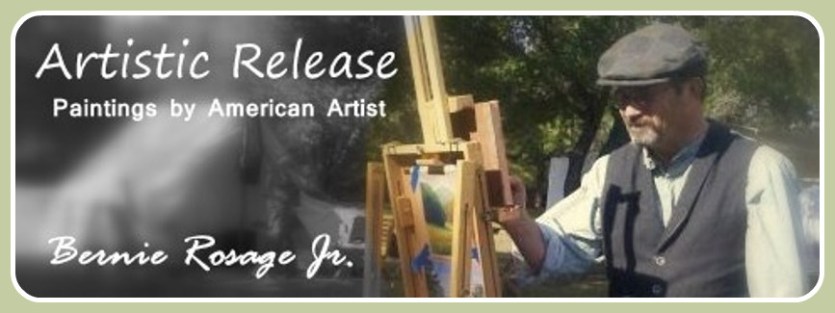Tuesday, June 24, 2014
HEADLINES: Rosage graduates from ECU and gets a Job!!! Wife is ECSTATIC!
It's Official... I have graduated from East Carolina University and landed a job as the new art teacher at Jacksonville High School... I am SO excited!... and so is Tami!!!!!!!!!!!
Aerial / Atmospheric Perspective... The Landscape Painter's ace in the hole!
I shared this with my class and thought you all may enjoy it. Understanding and using aerial/atmospheric perspective is an essential tool in the landscape painters toolbox.
The image alone speaks volumes... FYI... Bernie
Aerial or atmospheric interference with visual perception causes loss of contrast, detail and sharp focus. The effect, which Leonardo called "the perspective of disappearance," tends to make objects seem to take on a blue-gray middle value as they increase in distance. This effect is used by film makers to give the illusion of great depth, but can be used to great effect by painters and draftsmen. The illustration above shows loss of color saturation, contrast, and detail as the cubes fall further away from the viewer. Here is a list of attributes that objects have as they recede in space:
SIZE OF OBJECTS-smaller objects seem farther away (distortions can occur if objects are the same size or too close to the viewer).
OVERLAPPING OR SUPERIMPOSING-by partially covering one object with another it gives an appearance of depth (distortions also occur if viewer is too close).
TEXTURE-density increases as an object gets further away.
SPACING-objects clustered closer together seem farther away. Horizontal lines which get closer as they near the horizon line appear to be defining a recession in space.
FOCUS-objects lose detail as they recede into space.
BRIGHTNESS-objects are brighter when closer to the viewer, except for reflective surfaces.
SHADE AND SHADOW-darker shadows seem closer especially if overlapping other shadows.
UPWARD ANGULAR LOCATION-creates depth if juxtaposed to ground and sky lines, e.g. tall buildings.
COLOR-color intensity is much greater closer to the viewer and tends toward medium gray as it recedes.
Hint: As objects recede away from the viewer in atmospheric perspective, bright whites and rich blacks tend toward medium gray and eventually disappear into a blue/gray background. Even colors have greater intensity closer to a viewer than they do further away.
SOURCES:
http://moorestuff.us/ART_STUFF/chalkboard/13_ap-aerial.htm
http://www.arthints.com/what-is-atmospheric-perspective/
Subscribe to:
Posts (Atom)





